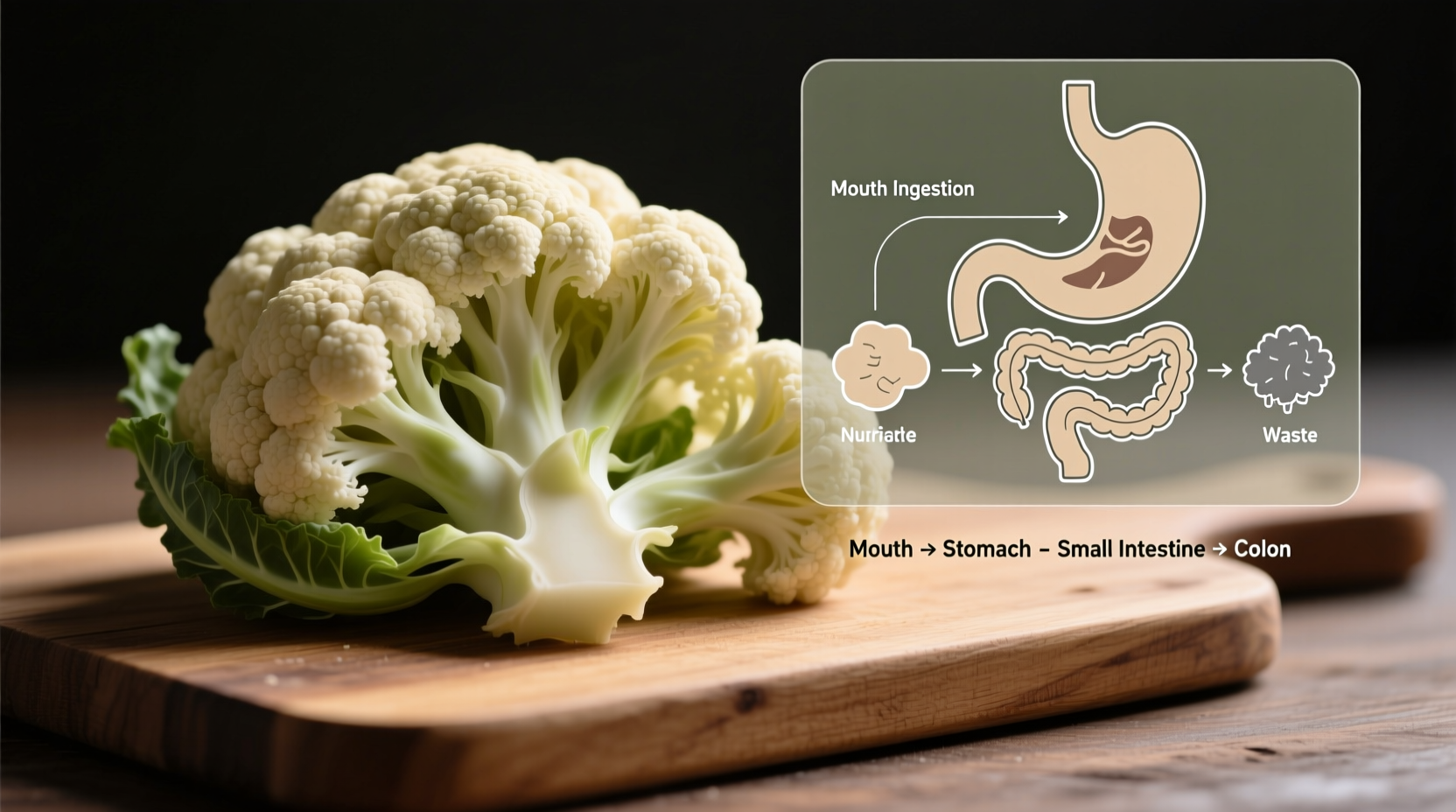Why Cauliflower Makes You Gassy: The Science Explained
When you eat cauliflower, your digestive system faces a unique challenge. Unlike simple sugars that break down easily in the small intestine, cauliflower contains raffinose—a complex carbohydrate your body lacks the enzyme alpha-galactosidase to digest. This indigestible fiber travels to your large intestine where gut bacteria ferment it, producing hydrogen, methane, and carbon dioxide gases.
According to the National Institutes of Health, cruciferous vegetables like cauliflower contain 2-3 times more raffinose than common gas-producing foods like beans. The average serving (1 cup raw) contains approximately 2.5 grams of fiber and significant oligosaccharides that trigger this fermentation process.
| Vegetable | Raffinose Content (per 100g) | Fiber Content (per 100g) | Typical Gas Production |
|---|---|---|---|
| Cauliflower | 0.6g | 2.0g | Moderate-High |
| Broccoli | 0.8g | 2.6g | High |
| Brussels Sprouts | 1.1g | 3.8g | Very High |
| Carrots | 0.1g | 2.8g | Low |
Who Experiences the Most Discomfort?
Research from the Mayo Clinic shows that approximately 65% of adults report some digestive discomfort when introducing cruciferous vegetables. Those with irritable bowel syndrome (IBS) experience symptoms more frequently—up to 89% according to a 2023 American Journal of Gastroenterology study.
The severity depends on your gut microbiome composition. People with higher concentrations of gas-producing bacteria like Bacteroides and Prevotella experience more pronounced effects. This explains why some individuals tolerate cauliflower well while others struggle significantly.

Proven Methods to Reduce Gas from Cauliflower
You don't need to eliminate this nutrient powerhouse from your diet. Implement these evidence-based strategies to minimize discomfort:
Optimal Cooking Techniques
Boiling cauliflower for 8-10 minutes reduces raffinose content by up to 40% compared to raw consumption, according to USDA FoodData Central analysis. Steaming preserves more nutrients while still breaking down complex carbohydrates. For maximum benefit, try this sequence:
- Soak florets in salted water for 30 minutes before cooking
- Boil in abundant water for 7-8 minutes until tender-crisp
- Rinse with cold water to stop cooking process
- Add digestive-friendly spices like ginger or cumin during preparation
Strategic Food Pairing
Combine cauliflower with foods that support digestion:
- Proteins: Pair with lean proteins like chicken or fish to slow digestion
- Carminative spices: Add ginger, cumin, or fennel seeds which contain compounds that reduce gas formation
- Probiotic foods: Consume with yogurt or kefir to introduce beneficial bacteria
Gradual Introduction Protocol
Rather than eliminating cauliflower, build tolerance systematically:
- Start with 1/4 cup cooked cauliflower 2-3 times weekly
- Wait 3 days between servings to assess tolerance
- Gradually increase portion size over 4-6 weeks
- Track symptoms in a food diary to identify personal thresholds
When to Consult a Healthcare Professional
While cauliflower-induced gas is normal for most people, certain symptoms warrant medical attention. The American Gastroenterological Association recommends consulting a doctor if you experience:
- Persistent pain lasting more than 2 hours after eating
- Severe bloating that visibly distends your abdomen
- Diarrhea or constipation accompanying gas
- Unintentional weight loss alongside digestive issues
These could indicate underlying conditions like small intestinal bacterial overgrowth (SIBO), irritable bowel syndrome, or food intolerances requiring professional management.
Maximizing Benefits While Minimizing Discomfort
Cauliflower remains a nutritional powerhouse rich in vitamin C, vitamin K, and cancer-fighting compounds called glucosinolates. By implementing these strategies, most people can enjoy its benefits without significant discomfort. Remember that individual tolerance varies—what works for one person might not work for another. Pay attention to your body's signals and adjust your approach accordingly.











 浙公网安备
33010002000092号
浙公网安备
33010002000092号 浙B2-20120091-4
浙B2-20120091-4